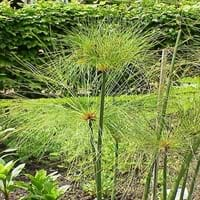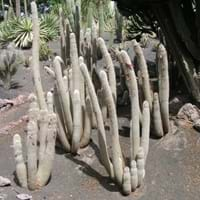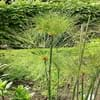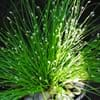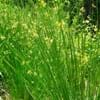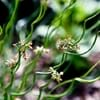Life Span
Annual and Perennial
Perennial
Type
Sedge or Rush
Cactus
Origin
Hybrid origin
Central America, South America, Brazil
Types
Mexican Papyrus, Dwarf Papyrus, Giant Papyrus
Not Available
Habitat
Moist Soils, tropical environments, Tropical regions, Wet ground, Wet lands
Desert, Temperate Regions
USDA Hardiness Zone
9-12
12-15
AHS Heat Zone
12-10
12-10
Sunset Zone
H1, H2, 8, 9, 12, 13, 14, 15, 16, 17, 18, 19, 20, 21, 22, 23, 24
12, 13, 21, 22, 23, 24
Habit
Clump-Forming
Upright/Erect
Minimum Width
Not Available
Flower Color
Sandy Brown
Red, Orange, Salmon
Flower Color Modifier
Bicolor
Not Available
Fruit Color
Brown
Not Available
Leaf Color in Spring
Dark Green
Not Available
Leaf Color in Summer
Dark Green
Not Available
Leaf Color in Fall
Dark Green
Not Available
Leaf Color in Winter
Dark Green
Not Available
Leaf Shape
Grass like
Succulent
Plant Season
Spring, Summer, Fall, Winter
Spring, Summer, Fall, Winter
Sunlight
Full Sun, Partial Sun
Full Sun
Growth Rate
Fast
Not Available
Type of Soil
Clay, Loam, Sand
Loam, Sand
The pH of Soil
Neutral
Acidic, Neutral, Alkaline
Soil Drainage
Poorly Drained
Well drained
Bloom Time
Summer
Spring, Summer
Tolerances
Drought
Drought
Where to Plant?
Container, Ground, Pot
Container, Ground, Pot
How to Plant?
Stem Planting
Seedlings, Stem Cutting
Plant Maintenance
Medium
Medium
Watering Requirements
Average Water Needs, Keep ground moist, Requires a lot of watering
Reduce watering in winter
In Summer
Lots of watering
Lots of watering
In Spring
Moderate
Moderate
In Winter
Average Water
Average Water
Soil pH
Neutral
Acidic, Neutral, Alkaline
Soil Type
Clay, Loam, Sand
Loam, Sand
Soil Drainage Capacity
Poorly Drained
Well drained
Sun Exposure
Full Sun, Partial Sun
Full Sun
Pruning
Remove damaged leaves, Remove dead branches, Remove dead leaves
No pruning needed, Remove damaged leaves, Remove dead branches, Remove dead leaves
Fertilizers
All-Purpose Liquid Fertilizer
Fertilize the soil before planting, slow-release fertilizers
Pests and Diseases
Red blotch
Bacterial Stem Rot, fungus, Mealybugs, Spider mites
Plant Tolerance
Drought
Drought
Flower Petal Number
Single
Single
Foliage Texture
Fine
Bold
Foliage Sheen
Glossy
Not Available
Attracts
Flying insects, Hummingbirds
Hummingbirds
Allergy
Not Available
Not Available
Aesthetic Uses
Showy Purposes
Landscape Designing, Showy Purposes, Wild gardens
Beauty Benefits
Not Available
Not Available
Edible Uses
Insignificant
No
Environmental Uses
Air purification
Air purification
Medicinal Uses
Cancer, Heals minor burns, Wounds
No Medicinal Use
Part of Plant Used
Stem
Whole plant
Other Uses
Constructing Boats, Used as fuel, Used in paper industry
Florist trade and landscaping, Used as Ornamental plant
Used As Indoor Plant
Yes
No
Used As Outdoor Plant
Yes
Yes
Garden Design
Bog Garden, Container, Feature Plant, Houseplant, Mixed Border, Water Gardens
Container, Houseplant, Rock Garden, Wall
Botanical Name
CYPERUS 'Wild Spike'
Cleistocactus strausii
Common Name
Papyrus, Wild Spike Cyperus
silver torch or wooly torch
In Hindi
पेपिरस संयंत्र
Cleistocactus strausii
In German
Papyrus-Pflanze
Cleistocactus strausii
In French
usine papyrus
Cleistocactus strausii
In Spanish
planta del papiro
Cleistocactus strausii
In Greek
πάπυρο
cleistocactus strausii
In Portuguese
planta do papiro
Cleistocactus strausii
In Polish
Papyrus roślin
cleistocastus strausii
In Latin
cHARTA
Cleistocactus strausii
Phylum
Magnoliophyta
Magnoliophyta
Class
Agaricomycetes
Magnoliopsida
Order
Poales
Caryophyllales
Family
Cyperaceae
Cactaceae
Genus
Cyperus
Cleistocactus
Clade
Angiosperms, Commelinids, Monocots
Angiosperms, Core eudicots, Eudicots
Tribe
Cariceae
Trichocereeae
Subfamily
Cyperoideae
Cactoideae
Number of Species
Not Available
Not Available
Importance of Papyrus and Cleistocactus Strausii
Want to have the most appropriate plant for your garden? You might want to know the importance of Papyrus and Cleistocactus Strausii. Basically, these two plants vary in many aspects. Compare Papyrus and Cleistocactus Strausii as they differ in many characteristics such as their life, care, benefits, facts, etc. Every gardener must at least have the slightest clue about the plants he wants to plant in his garden. Compare their benefits, which differ in many ways like facts and uses. The medicinal use of Papyrus is Cancer, Heals minor burns and Wounds whereas of Cleistocactus Strausii is No Medicinal Use. Papyrus has beauty benefits as follows: Not Available while Cleistocactus Strausii has beauty benefits as follows: Not Available.
Compare Facts of Papyrus vs Cleistocactus Strausii
How to choose the best garden plant for your garden depending upon its facts? Here garden plant comparison will help you to solve this query. Compare the facts of Papyrus vs Cleistocactus Strausii and know which one to choose. As garden plants have benefits and other uses, allergy is also a major drawback of plants for some people. Allergic reactions of Papyrus are Not Available whereas of Cleistocactus Strausii have Not Available respectively. Having a fruit bearing plant in your garden can be a plus point of your garden. Papyrus has no showy fruits and Cleistocactus Strausii has showy fruits. Also Papyrus is flowering and Cleistocactus Strausii is flowering. You can compare Papyrus and Cleistocactus Strausii facts and facts of other plants too.
